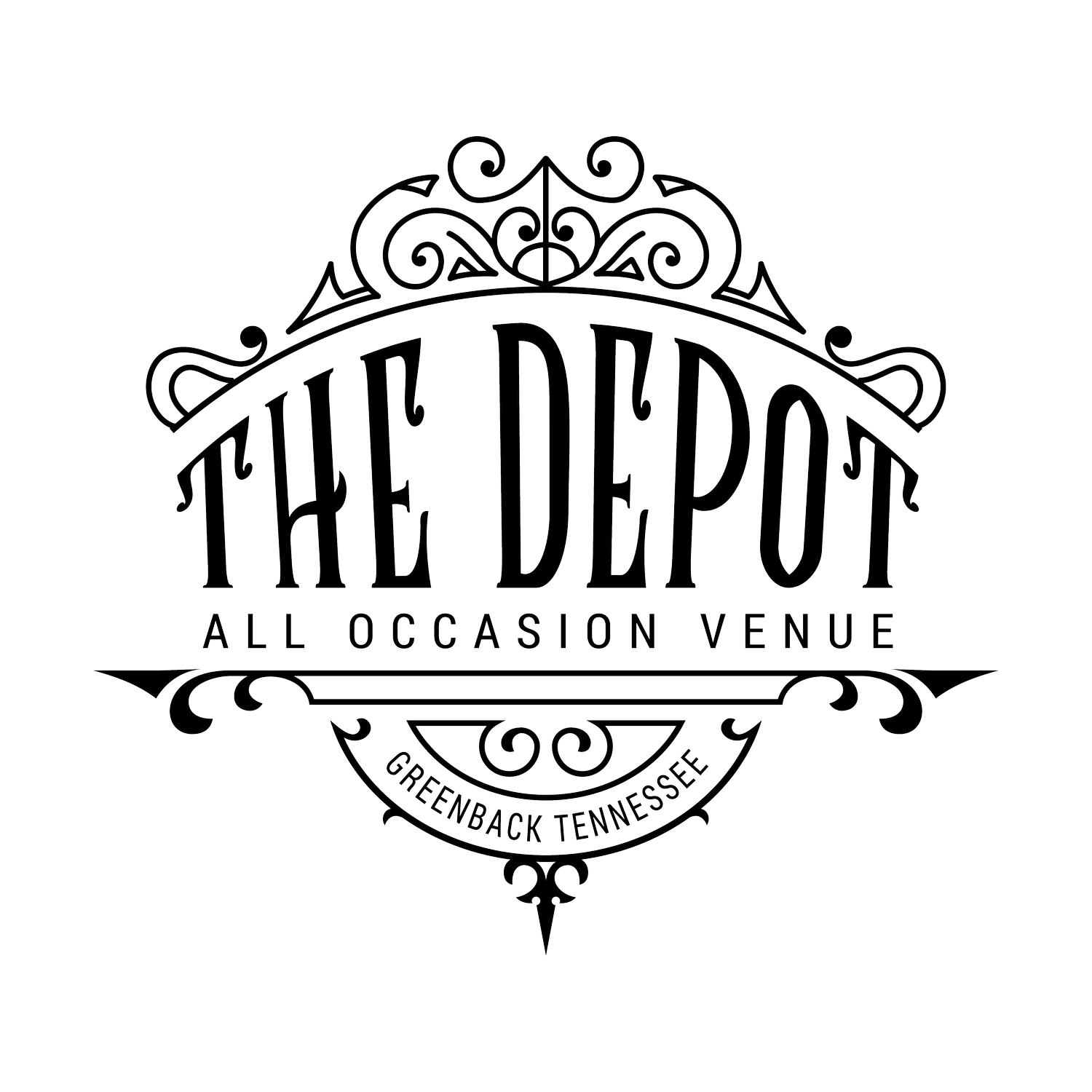We are committed to preserving the charm and rich history of this iconic train depot for a simple yet profound reason: we believe in honoring the past to create beautiful futures. This historic landmark holds within its walls a tapestry of stories, memories, and connections that have transcended generations. By maintaining its charm and preserving its history, we pay homage to the countless individuals who have passed through these tracks, the love stories that have begun here, and the timeless beauty of a bygone era. We strive to create an environment where modern elegance meets vintage allure, allowing our guests to step back in time while celebrating the most important moments of their lives. 'The Greenback Depot' is not just a venue; it's a living tribute to the enduring magic of history, love, and shared experiences.
The Greenback Depot is a former railroad station located in Greenback, Tennessee, United States. Built in 1914 by the Louisville and Nashville Railroad (L&N), the depot served rail freight and passengers traveling in and out of the Greenback area until 1954. Restored for use as a community events center by Ronald Edmondson in the early 2010s, the depot was listed on the National Register of Historic Places in 2013 in recognition of its role in the area's transportation history.
The Knoxville Southern Railroad (not to be confused with the larger Southern Railway) began building a rail line connecting Knoxville, Tennessee, with Blue Ridge, Georgia, in the late 1880s. This line reached what is now Greenback in 1890. At the rail line's intersection with Morganton Road, developers made plans to build a town known as "Allegheny," presumably named after the Allegheny Springs resort further to the south. Lorenzo Thompson, who had established the Greenback Post Office several miles to the east in the early 1880s, moved his post office to the new town, and the town gradually adopted the name "Greenback."
In 1890, the Knoxville Southern merged with the Marietta and North Georgia Railroad. This railway was, in turn, absorbed by the Atlanta, Knoxville and Northern Railway in 1895. The Atlanta, Knoxville and Northern was purchased by the Louisville and Nashville Railroad (L&N) in 1902. For most of the latter half of the 19th century, the L&N had avoided East Tennessee due to competition from the East Tennessee, Virginia and Georgia Railroad (ETV&G), and in 1894 had made an agreement with the ETV&G's successor, the Southern Railway, not to encroach upon one another's territory. After the Southern violated this agreement, the L&N began building a rail line connecting Cincinnati and Atlanta.
The L&N's new Cincinnati-Atlanta line continued southward from Knoxville through Maryville, Vonore, and Madisonville before reaching Etowah (the tracks along this line are still used by CSX). At Mentor (just north of modern Alcoa), a side route branched off from the main line, and looped around through Louisville, Friendsville, and Greenback, before rejoining the main line at Jena (a community once located where the tracks cross modern Highway 95). In the early 1900s, the L&N constructed a number of elaborate depots along this line, including the Richard Monfort-designed L&N Station in Knoxville and the Etowah Depot in Etowah. Construction of the Greenback Depot began in 1913, and was completed the following year.
William H. Jones, a Loudon County court clerk and local businessman, served as Greenback's station agent from 1910 until his death in 1954, including the entire period that the depot building was in use for its original purpose. Along with selling train tickets, Jones issued hunting, fishing and marriage licenses from his depot office. As a county official, he officiated at more than 3,500 marriage ceremonies, many of them in the depot. By the early 1950s, the L&N had ceased passenger service at Greenback, and operated only two freight lines to the city. After Jones's death in 1954, the L&N closed the depot.
After searching for several years for a preservation-minded buyer, the depot was sold to Ron Edmondson in March 2012. Edmondson removed a false second story (which had been added for office space), replaced the roof, and painted the building in a manner that resembles its early 20th-century appearance. A wooden statue of the Cherokee leader Firekiller, carved by Townsend-based chainsaw artist Dave LaVoie, has been placed on the depot lot.










